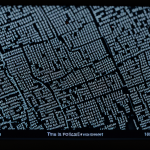The Interplay Between British Women’s Fashion and Cultural Identity
Fashion serves as a dynamic dialogue between British women’s fashion and cultural identity, acting both as a mirror reflecting societal values and as a maker shaping cultural narratives. Dress codes and fashion choices inherently carry symbolism that communicates an individual’s place within society, whether aligning with tradition or challenging norms. For example, the use of tailored suits, floral prints, or punk-inspired attire conveys varying attitudes towards gender roles and societal expectations.
The significance of fashion in expressing identity is deeply tied to societal norms. In Britain, strict dress codes in certain historical periods reinforced class distinctions and gender roles, while contemporary shifts illustrate evolving perspectives on independence and multiculturalism. The evolution of fashion—from conservative styles to more experimental ensembles—mirrors broader cultural changes, including the rise of feminist ideas and increased diversity.
Also to read : How Can UK Women Master the Art of Mixing High Street with Designer Fashion?
Understanding British women’s fashion within this cultural context highlights how clothing choices do more than cover the body; they articulate identity, empower individuals, and contribute to ongoing societal dialogue. This intricate relationship between style and self-expression underscores fashion’s pivotal role in shaping and expressing cultural identity over time.
Historical Evolution of British Women’s Fashion
British women’s fashion has undergone significant transformation, closely tied to the history of British fashion and prevailing cultural values. During the Victorian era, fashion emphasized modesty and strict gender roles, with corsets and elaborate gowns reflecting societal expectations of femininity and class. These styles conveyed a clear message about a woman’s social standing and adherence to contemporary norms.
Topic to read : How Has UK Women’s Fashion Influenced Global Trends Over Time?
As the 20th century progressed, women’s clothing history reveals a shift toward practicality and self-expression. The influence of royal figures and the aristocracy remained prominent, but working-class styles introduced more functional garments, signaling changing attitudes toward women’s roles and work. The flapper dresses of the 1920s, for example, challenged earlier restrictions and embodied a spirit of liberation, while post-war fashion further embraced comfort and individuality.
The evolution of style in British women’s fashion mirrors broader societal shifts, such as the rise of feminism and transformations in class structure. Each period’s clothing choices not only reflected existing social realities but also contributed to shaping attitudes towards gender and identity. This historical context deepens understanding of how fashion and society continuously influence one another.
Contemporary British Women’s Fashion and Its Cultural Impact
Contemporary British women’s fashion reflects a rich tapestry of cultural influences and evolving national identity. Modern British fashion draws heavily from diverse sources, blending traditional elements with innovative styles to express individuality and social values. Current trends emphasize sustainability, gender fluidity, and bold self-expression, signaling a shift from purely aesthetic concerns to more meaningful cultural statements.
Subcultures continue to play a vital role. Punk and street style remain iconic contemporary style trends, showcasing rebellion and multiculturalism within urban spaces. These styles not only celebrate cultural diversity but also challenge mainstream norms, reinforcing fashion’s power as a vehicle for social commentary.
Influential designers and fashion icons contribute significantly to this dynamic landscape. Figures like British designers often use their platforms to highlight ethnic diversity and social issues, embedding deeper cultural narratives within their collections. Their work fosters critical dialogues about identity, inclusivity, and heritage, underscoring the profound cultural impact of fashion in Britain.
In essence, modern British fashion is not static; it evolves with changing societal attitudes, continually redefining what it means to express cultural identity through clothing today. This interplay supports a vibrant fashion ecosystem that both reflects and shapes contemporary British culture.
Intersection of Fashion, Class, Ethnicity, and Social Movements
The relationship between fashion and class in British women’s fashion remains intricate. Historically, clothing signaled class distinctions clearly; today, while such markers have blurred, subtle cues in style and brand choices still influence public perception. For example, luxury labels often convey social status, whereas streetwear may express cultural belonging, reflecting ongoing class narratives within fashion.
Ethnicity plays a crucial role in shaping British women’s fashion, especially as multiculturalism becomes central to national identity. Diverse ethnic influences infuse fabrics, patterns, and styles, enriching the fashion landscape. This visibility promotes inclusivity and empowers minority communities by celebrating heritage and challenging monocultural norms.
Fashion also intersects deeply with social movements in the UK. Feminist and LGBTQ+ movements utilize clothing as a form of political expression and identity affirmation, often rejecting traditional gendered dress codes. Campaigns and designers championing these causes embed activism into fashion and society, illustrating its power beyond aesthetics.
Together, these factors highlight how British women’s fashion dynamically navigates class, ethnicity, and social change, reinforcing its role as a powerful cultural and social tool.
The Interplay Between British Women’s Fashion and Cultural Identity
Fashion operates as both a mirror and a maker of cultural identity, reflecting existing societal values while actively shaping perceptions of self and community. British women’s fashion reveals how dress codes and symbolism communicate nuanced messages. For instance, the choice between traditional attire and avant-garde styles often signals personal alignment with—or resistance to—dominant cultural norms.
Dress codes historically reinforced social hierarchies and gender roles, making clothing a powerful language of status and identity. Today, these codes continue to influence British women’s fashion, though with greater fluidity and individual interpretation. The persistent symbolism embedded in fabrics, cuts, and motifs allows women to express allegiance to cultural heritage or to signal progressive values.
The evolution of British women’s fashion closely follows broader cultural changes. Shifts from restrictive Victorian styles to contemporary experimentation capture transformations in social attitudes toward gender, class, and ethnicity. As fashion intersects dynamically with society, it becomes an indispensable means of navigating and narrating cultural identity—both preserving tradition and championing innovation. This ongoing interplay highlights fashion’s unique role in bridging personal expression with collective identity in Britain today.



